How To Change Your Car’s Transmission Fluid
Updated: Apr. 03, 2024
Save money and extend the life of your vehicle by changing its transmission fluid yourself.
1 hour
Beginner
$70-$120
Introduction
Of all the fluids that need changing — engine oil, differential gear lube, transfer case fluid — transmission fluid was always the one I dreaded most. On some cars it's easy, but on many it's very inconvenient. It often requires you to drop the pan entirely and becomes a messy and complicated ordeal. Thankfully, there's a solution to the problem — at least for most vehicles. The trick is to work from the top, sucking old fluid up and out through the filler tube and then refilling it with fresh fluid. This procedure takes less than an hour and you don't have to worry about getting under the car or covered in transmission fluid.
As I mentioned, this technique will work on most vehicles. However, some vehicles have transmission filler tubes that won't allow the extraction hose to fit all the way down into the pan.
When To Call a Pro
If your transmission is still shifting slow or slipping even after new fluid has been added, this may be an indication the bands or clutch plates within the transmission are going bad. It could also indicate faulty or sludgy shift solenoids. Either way, it's time to talk to a transmission specialist.
About the Expert
Jay Cork, a self-taught mechanic and former manager of an O'Reilly's Auto Parts store has had his hands covered in transmission fluid more times than he cares to count.
Tools Required
- No tools required
Materials Required
- Fluid extraction pump
- Shop towels
- Transmission fluid (confirm with your dealership if unsure of your vehicle's type)
Project step-by-step (7)
Replacing Transmission Fluid
A hand-operated vacuum transmission fluid pump makes this job simple and clean. You can remove one-third to one-half of the fluid from the transmission at a time, and the rest will remain in the torque converter and the transmission cooler. Doing this procedure three or four times at one-week intervals replaces nearly all the old fluid. Any leftover old fluid will be diluted with plenty of fresh, new fluid.
I always run a vehicle for 5 to 10 minutes before changing its transmission fluid. This raises the temperature of the fluid, so it flows more easily; this is especially important to do in colder climates.
Some manufacturers recommend replacing the filter every time you change transmission fluid. Go with what your dealership recommends. Note: If your transmission pan is leaking, you should either drop it and replace the gasket or take it in for service.
Buy the right transmission fluid
Before you start, you need the right transmission fluid for your vehicle in hand. There have been many major improvements to transmission fluids over the last decade, and automakers have designed their transmissions with very specific lubrication characteristics in mind. Contact the dealership parts department to see if your car requires a specific fluid. Then call auto parts stores until you find one that stocks it. If you strike out, bite the bullet and buy it from the dealer (it’s usually more expensive).
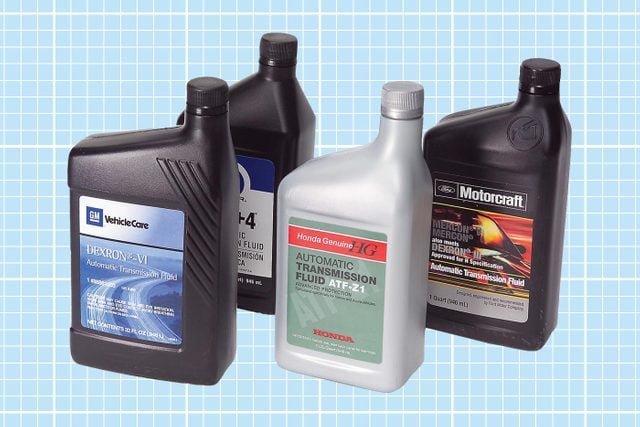
Insert the vacuum tube
- Remove the dipstick and set it aside.
- Insert the vacuum tube until you feel it “bottom out” on the bottom of the transmission pan.
- Pro Tip: Before you start, round over the end of the tube with a little sandpaper. This allows it to slide past any kinks in the fill tube more easily.
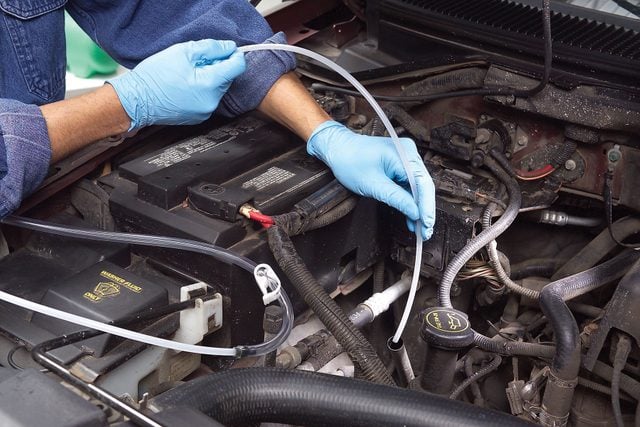
Pump up the tank
- Close the latch on the vinyl hose and pump up the transmission fluid pump’s vacuum tank with 30 to 50 strokes of the plunger.
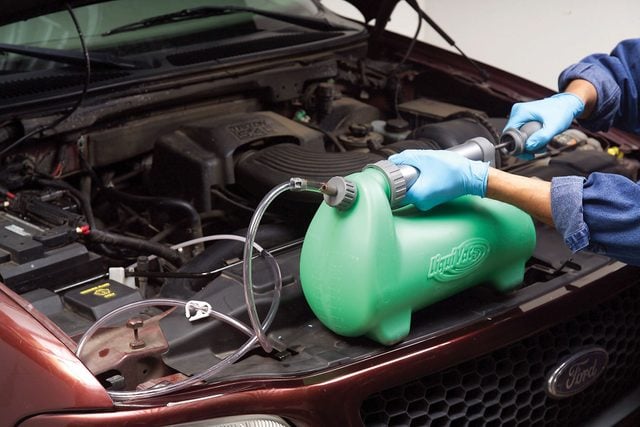
Draw out the fluid
- Release the latch on the hose and wait while the vacuum draws the old fluid out.
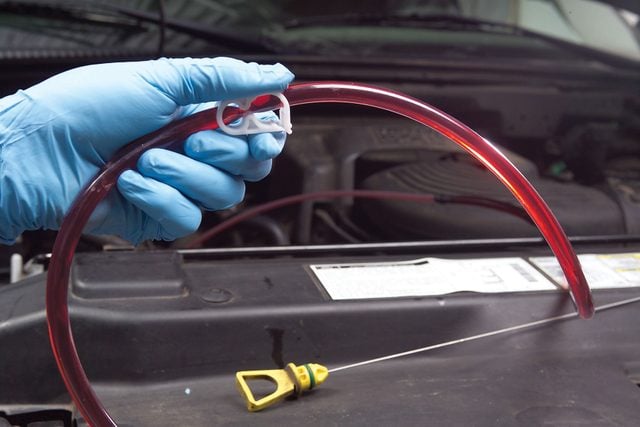
Refill with new fluid
- Read on the tank the amount of fluid you withdrew and refill the transmission with that amount of new fluid.
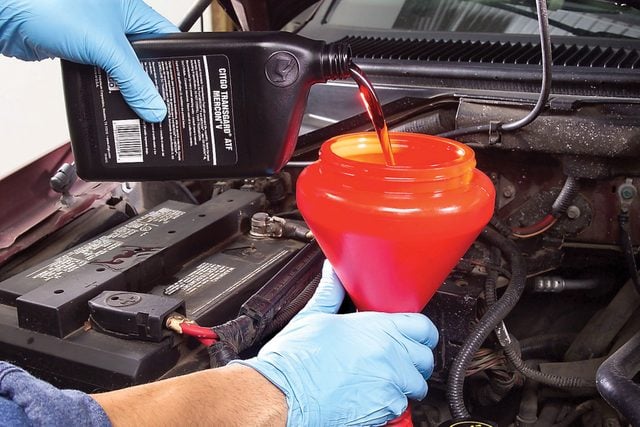
Frequently Asked Questions
What Does Transmission Fluid Do?
Transmission fluid provides lubrication and pneumatic pressure and keeps the internal components of your automatic transmission cool and running smoothly.
How Do You Know If Your Car’s Transmission Fluid Needs to Be Changed?
Slow shifts, or slipping at cruising speed are indicators of old or low transmission fluid. Time to change that fluid!
How Long Does Transmission Fluid Last?
This is a hard question to answer. It all depends on the type of vehicle and the way it’s driven.
Change your automatic transmission fluid according to the manufacturer’s recommendation — whether that’s 30,000 or 100,000 miles. A transmission fluid change will add tens of thousands of miles — which could be years of service — to a transmission’s life expectancy and prevent repairs costing thousands down the road.
What Happens If You Wait to Change Transmission Fluid?
When old transmission fluid goes bad, it loses its ability to keep the clutch plates and bands from properly engaging each other inside the transmission. This leads to excess heat due to slipping, which cooks the fluid. Cooked fluid gets gummy and clogs the journals, valves and even shift solenoids, causing slow shifting and the loss of forward gears or reverse. That leads to more heat and degradation, ultimately culminating in the premature failure of your transmission.
Is It Better to Do a Transmission Fluid Flush or to Change It?
Ask twelve different people and you may get ten different answers. In my experience, doing a gradual flush, as this article suggests, has proven to be the best method, unless the mileage of your vehicle indicates it’s time to change the filter, too. Then, it’s dropping the pan and a full flush. But for me, doing a partial drain and re-fill keeps my transmission fluid constantly fresh.

